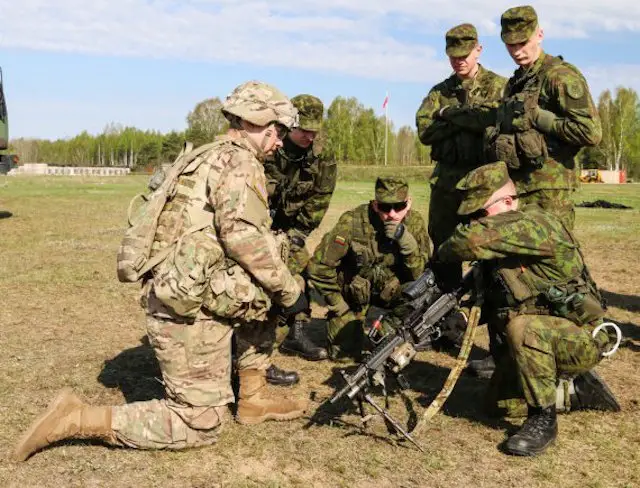Breaking news
NATO’s Eastern Europe rapid reaction force too vulnerable 41605161.
|
|
|||
|
Defence & Security News - NATO
|
|||
|
|
|||
| NATO’s Eastern Europe rapid reaction force too vulnerable | |||
|
NATO’s rapid reaction force is too vulnerable for Eastern Europe, in case of war with Russia, according to two senior military officials of the Alliance, who spoke to the Financial Times newspaper. Based on NATO’s assessments, the Very High Readiness Joint Task Force (VJTF) would be too vulnerable during deployment in the Baltic States.
|
|||
|
|
|||
 US and Lithuanian soldiers train together in the M249 Squad Automatic Weapon (Photo: US Army) |
|||
|
|
|||
|
The force of 5,000 soldiers needs time to be deployed and become combat-ready. Deployable forces run the highest risk during the initial phase of an operation, while trying to establish their positions in the area of operations. During that period of time, the NATO force is in high risk of being overrun by Russian forces based in Kaliningrad and near the borders, according to the generals. One of the high-ranking officials mentioned at the Financial Times that the NATO rapid reaction force would be at risk in any area “east of Oder” (the line of Germany’s eastern border). The Alliance has so far deployed rotational forces in Eastern Europe in an effort to increase its presence and readiness. Due to previous political agreement with Russia, these forces cannot have a permanent character. The upcoming July NATO Summit in Warsaw will be critical for the future capabilities. The member-states have been discussing for some time now the deployment of additional land forces in the region, as a deterrent tool. Moreover, the organization has been considering the serious threats posed by asymmetric threats or hybrid wars as they are often called. The recent aggression in Ukraine has showed how such threats can evolve, threating strategic interests, while being hard to tackle given that the lines between civilians and combatting forces is obscure. |
|||



















